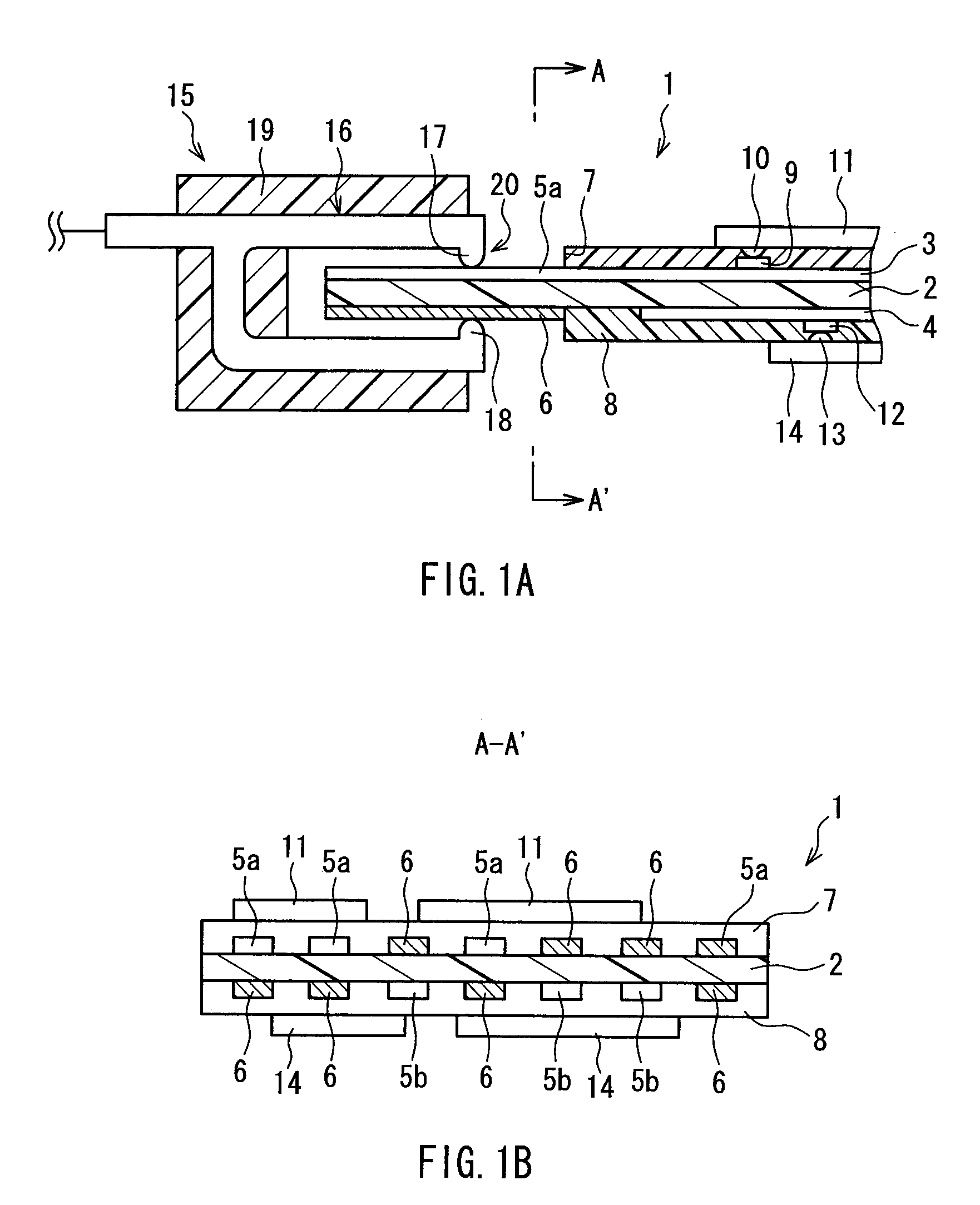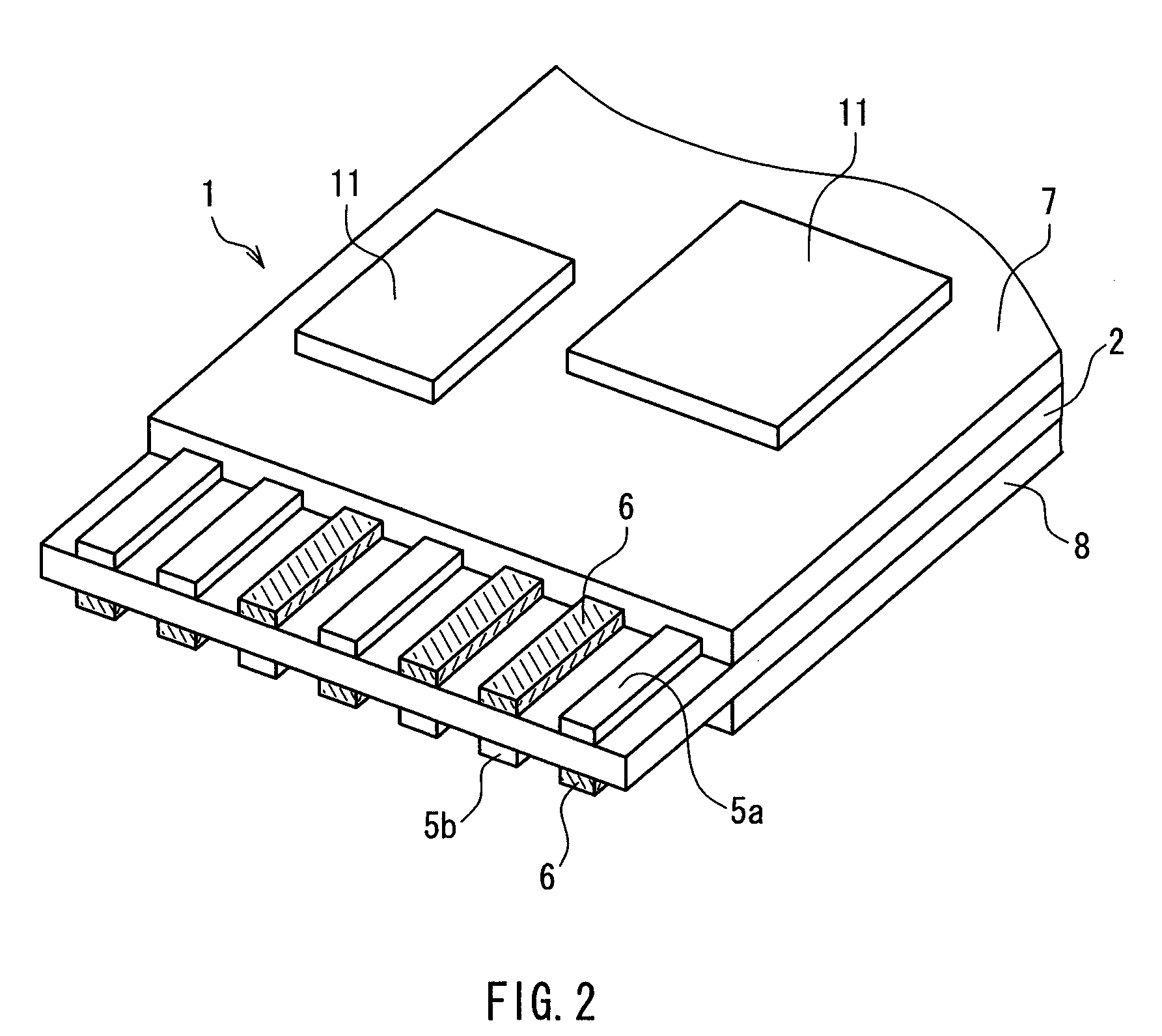Circuit board, connection structure, and apparatus
- Summary
- Abstract
- Description
- Claims
- Application Information
AI Technical Summary
Benefits of technology
Problems solved by technology
Method used
Image
Examples
Embodiment Construction
[0033]A circuit board according to a preferred embodiment of the present invention is connected to a connector that includes a connection port for receiving an object to be connected and a plurality of contact portions located at upper and lower positions of the connection port. Any of the contact portions at one of the upper and lower positions and any of the contact portions at the other position face each other in a vertical direction, and each contact portion is connected electrically to the opposite contact portion. The circuit board includes a base substrate, a first wiring layer formed on one principal surface of the base substrate, and a second wiring layer formed on the other principal surface of the base substrate. First terminals connected to the first wiring layer are provided on the one principal surface, and second terminals connected to the second wiring layer are provided on the other principal surface. The first terminals and the second terminals come into contact w...
PUM
 Login to View More
Login to View More Abstract
Description
Claims
Application Information
 Login to View More
Login to View More - R&D
- Intellectual Property
- Life Sciences
- Materials
- Tech Scout
- Unparalleled Data Quality
- Higher Quality Content
- 60% Fewer Hallucinations
Browse by: Latest US Patents, China's latest patents, Technical Efficacy Thesaurus, Application Domain, Technology Topic, Popular Technical Reports.
© 2025 PatSnap. All rights reserved.Legal|Privacy policy|Modern Slavery Act Transparency Statement|Sitemap|About US| Contact US: help@patsnap.com



